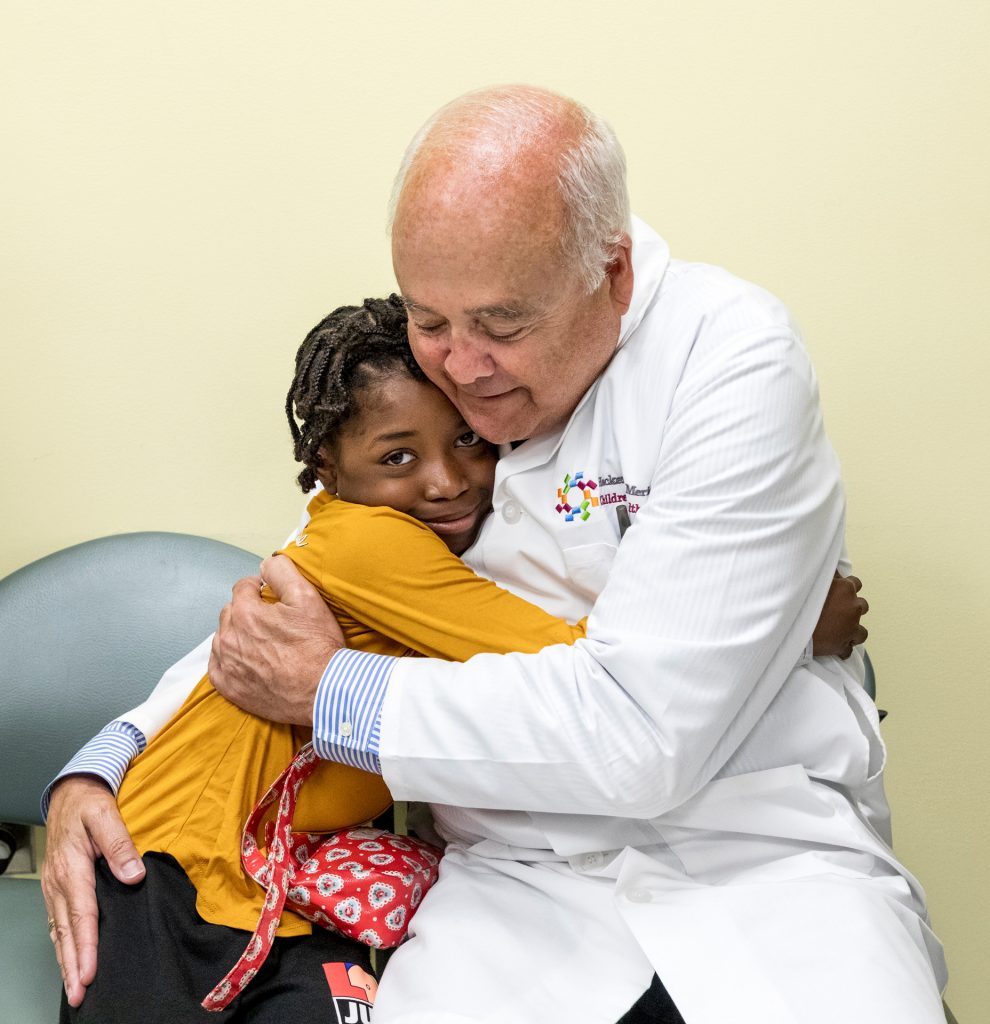OFFERING A PAIR OF LEADING-EDGE THERAPIES THAT WORK TO CURE, RATHER THAN MANAGE, SICKLE CELL DISEASE, HACKENSACK MERIDIAN HEALTH IS PROVIDING HOPE FOR THE THOUSANDS OF NEW JERSEY CHILDREN LIVING WITH THE DEVASTATING BLOOD DISORDER BY AMANDA McCOY
PHOTOS BY AMESSE PHOTOGRAPHY

Red blood cells are, by far and away, the most abundant cell in the human body, accounting for 80% of the body’s total cell count and 40-45% of the blood’s volume. Healthy red blood cells are round with bowl-like indentations on both sides (think a doughnut, but without the hollow center), allowing them to flow easily through the vessels to carry life-sustaining nutrients to all the body’s organs and tissues, while delivering waste to the kidneys and liver to clean the blood. It’s a large, vital role in the body’s vast circulatory system, and by the time the average person reaches adulthood, they have between 25 and 30 trillion red blood cells.
But every year, approximately 2,000 babies are born in the U.S. with sickle cell disease, a disorder that causes the body’s red blood cells to take on a half-moon shape, making it difficult for them to flow and move throughout the blood stream. These sickle-shaped cells often stick together, causing blockages in the vessels and restricting the flow of oxygen. T hough rare, it’s the most commonly inherited hematologic disease, and the Centers for Disease Control and Prevention estimate 100,000 Americans are currently living with sickle cell. Five thousand of them reside in New Jersey.

“Because of their shape, sickle cells get caught in the blood vessels, which can cause a number of serious issues like severe pain, stroke, organ damage, and even organ failure,” noted Alfred P Gillio, MD, a pediatric hematology-oncology specialist and director of the Children’s Cancer Institute at Hackensack Meridian Children’s Health. “It also makes the patient highly susceptible to infection. It’s a devastating, chronic disease, one that, if uncured, will cause health issues for the duration of the patient’s life.”
For people with sickle cell disease, there are currently four FDA-approved medications to help improve symptoms and mitigate pain, but none are curative, and patients are still at risk of serious complications like stroke and organ failure. Even for patients on medication, their lifespans are slashed to 42-45 years, with infection being the leading cause of death.
Luckily, medication is no longer a patient’s only option; Hackensack Meridian Health is currently the only healthcare network in the state that offers two types of curative therapies for adults and children with sickle cell disease: bone marrow transplant and gene therapy. “The big focus in the field is to cure these patients so they can live a normal life,” said Dr. Gillio, who first joined Joseph M. Sanzari Children’s Hospital at Hackensack University Medical Center in 1996 and has three decades of experience in treating cancer and chronic blood disorders in children.

HMH first began performing pediatric bone marrow transplants for sickle cell in 2002, and since then 80 patients have successfully undergone the procedure. The procedure works by infusing stem cells from a healthy donor into a patient to replace bone marrow that is not working properly, stimulating the production of new red blood cells, white blood cells, and platelets. The success rate is 95%, and because the new marrow offers a full cure, patients never again experience sickle cell-related complications.
Bone marrow transplant’s primary drawback, explained Dr. Gillio, is the difficulty at times finding a well-matched donor. “The best donor is typically a full brother or sister, but only 20% of patients have a matching sibling donor,” said Dr. Gillio. “Lately, we’ve been able to perform half-matched transplants using the marrow from other members of the family, like parents, aunts, and uncles, and sometimes we’re able to find a match from volunteers in a national registry.”

In 2019, Hackensack Meridian Children’s Health began offering an alternative procedure on a research trial basis: gene therapy. This procedure uses a patient’s own stem cells, eliminating the need for a donor. Cells are collected and sent to a lab, where the sickle cell gene is modified before being implanted back into the patient. The therapy was only available on a research trial basis until last December, when the FDA approved the treatment for commercial use in patients 12 or older.
“Our goal at HMH is to continue making both of these therapies better,” added Dr. Gillio, who began treating patients with sickle cell while pursuing his MD at the Medical College of Virginia, Richmond. “It’s an incredible thing to be able to cure these patients. As physicians, we can typically get the patients through their childhood with limited issues, but as they become young adults, that’s when they start to struggle. People with sickle cell disease can’t be in extreme tempera tures, they are unable to go to camp, and can’t swim in the pool or ocean with their friends. It was such a disheartening thing to witness. To see our patients now live normal lives brings me so much joy.”

Since Since Hackensack Meridian Children’s Health harbors the only pediatric stem cell transplant and cellular therapy program in the state, Dr. Gillio said the hospital offers financial assistance and housing for the patient and their families should they need a helping hand. “We will pay for their transportation to get here, even if they are located 50 miles away,” he added. “There are incredible treatment options available for patients with sickle cell, so Hackensack Meridian Children’s Health will do whatever we can to get them here.”
Hackensack Meridian Health
Pediatric Blood and Marrow Transplantation and Cellular Therapy
551.996.5600 / hackensackmeridianhealth.org/en/services/childrens-health
